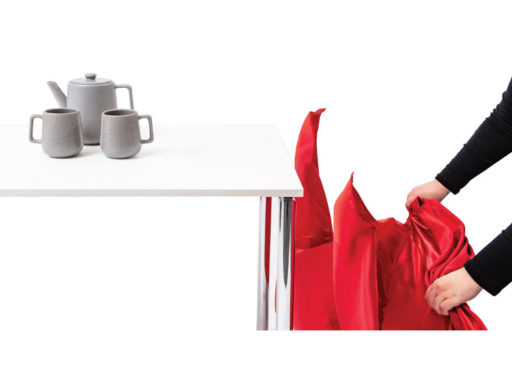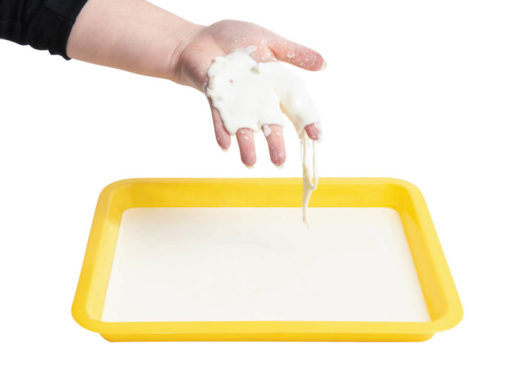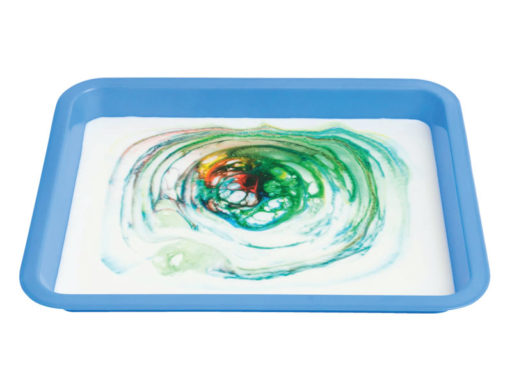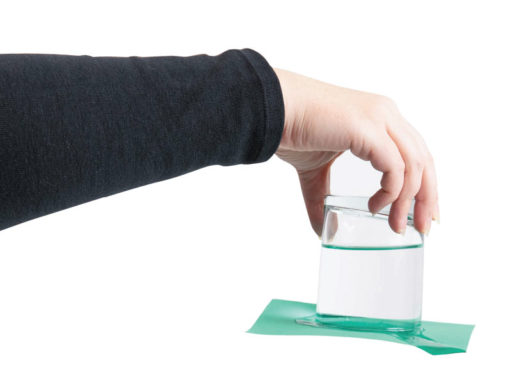Magic tricks might not be an obvious place to look for science, but in reality a lot of tricks rely on manipulating certain laws of physics to achieve a stunning result. This activity shows how to harness gravity, friction and motion to produce an egg-drop trick.
Printable downloads
Follow these steps…
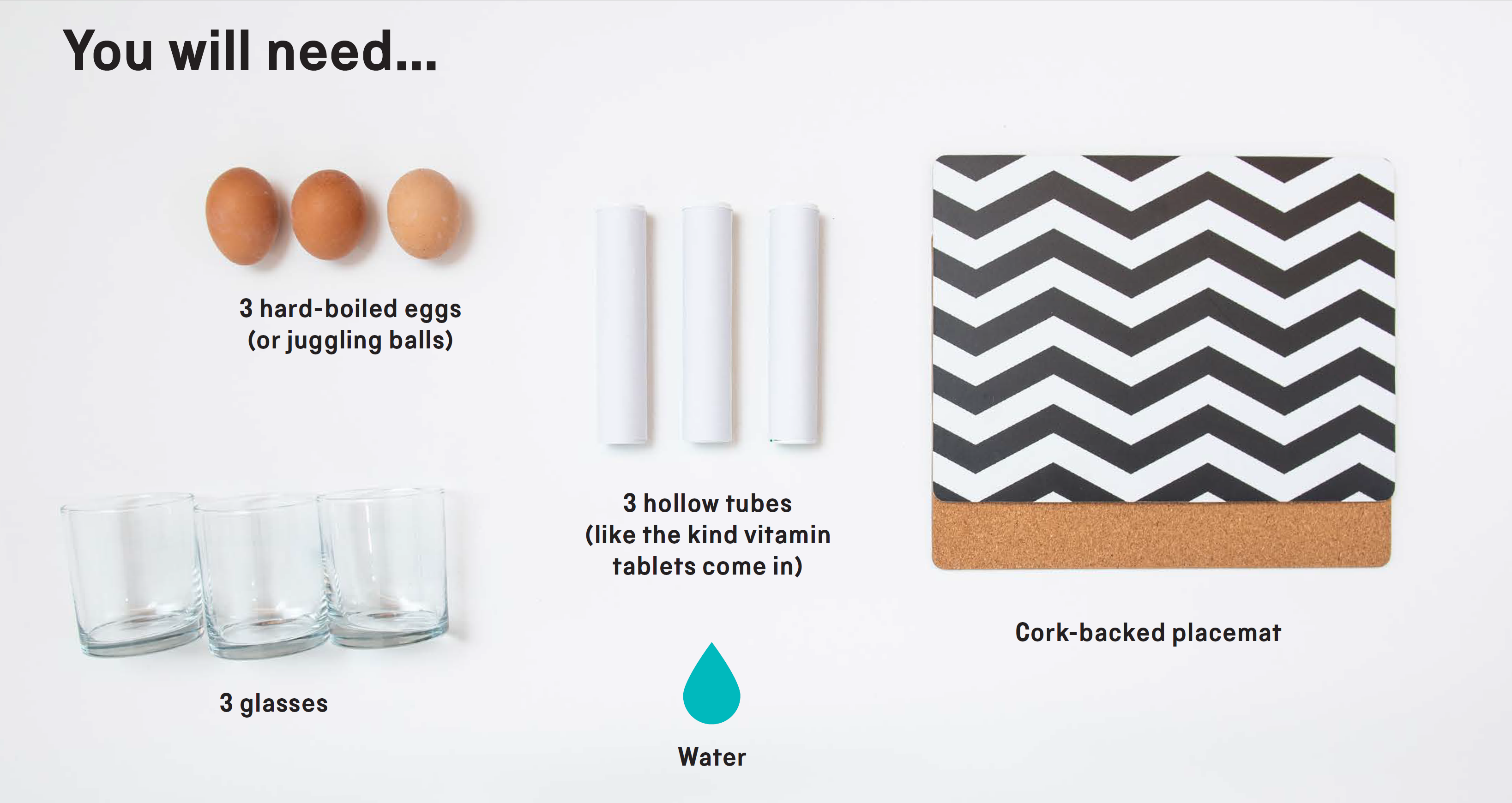
Top tip
Depending on how hard you hit the mat it could go flying. Be sure to make space around you when doing this trick and to warn other people nearby.
-
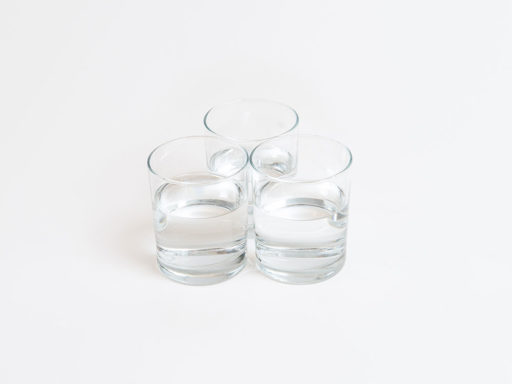 Arrange the glasses in a triangle formation, then half fill them with water.
Arrange the glasses in a triangle formation, then half fill them with water. -
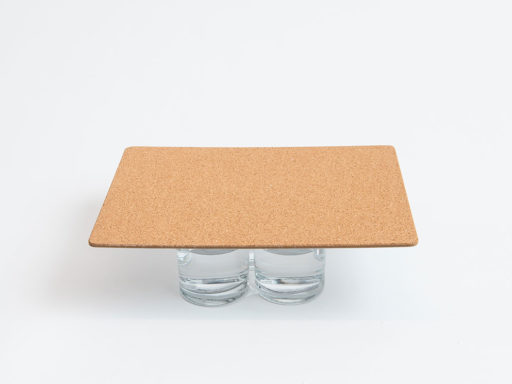 Balance the placemat on the glasses with the cork side facing upwards.
Balance the placemat on the glasses with the cork side facing upwards. -
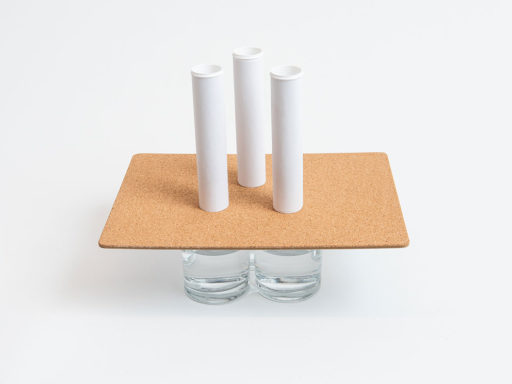 Next, balance the hollow tubes on the placemat, open end up, and make sure they are directly over the glasses.
Next, balance the hollow tubes on the placemat, open end up, and make sure they are directly over the glasses. -
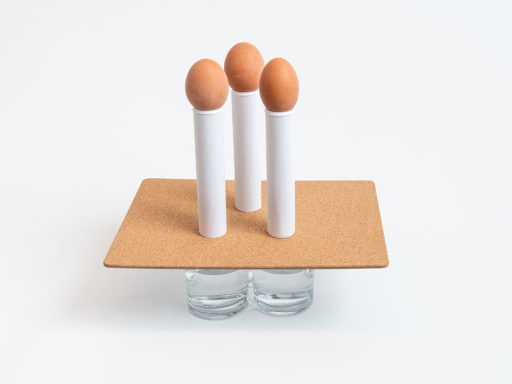 The tricky bit! Balance an egg or ball on top of each of the three tubes.
The tricky bit! Balance an egg or ball on top of each of the three tubes. -
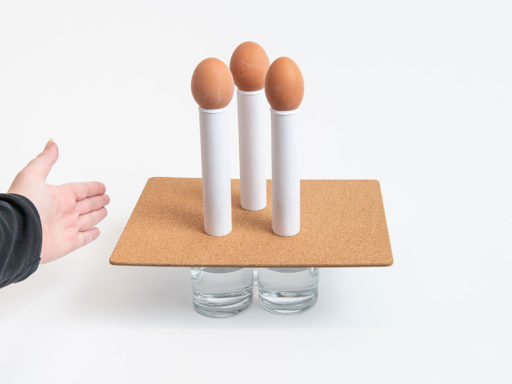 Hit the placemat hard from the side with a flat open palm…
Hit the placemat hard from the side with a flat open palm… -
 and see what happens!
and see what happens!
Think and talk about…
- Which part of the mat would create the most friction? And which part the least?
- Why do you need there to be friction between the placemat and the tubes?
- Why don’t the eggs move to the side when everything else does?
Investigate…
- What other items could you put on top of the tubes?
- Try using taller or shorter tubes to see if the trick still works.
- What happens if you put the placemat the other side up?
- Can you successfully replace the mat with any other materials?
Did you know?
On 22 August 1994, David Donoghue dropped fresh eggs 213 metres from a helicopter onto a golf course at Blackpool in Lancashire, and they didn’t break, setting a new world record!
What’s the science?
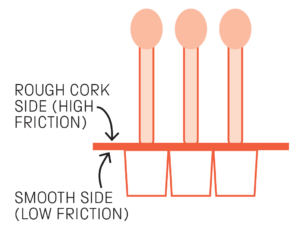 This trick works because the placemat has a smooth side and a rough side. The smooth side is face down on the glasses, and slides over them easily. However, the rough cork on the other side grips the tubes, dragging them along, as there is more friction between the surfaces. As the tubes are being dragged away, the eggs slip off easily and gravity pulls them down into the glasses.
This trick works because the placemat has a smooth side and a rough side. The smooth side is face down on the glasses, and slides over them easily. However, the rough cork on the other side grips the tubes, dragging them along, as there is more friction between the surfaces. As the tubes are being dragged away, the eggs slip off easily and gravity pulls them down into the glasses.
This demonstrates Newton’s first law of motion: objects remain at rest or travelling at constant speed unless a force acts on them to change their motion. The eggs remain at rest until the force of gravity can pull them downwards.
Science in your world
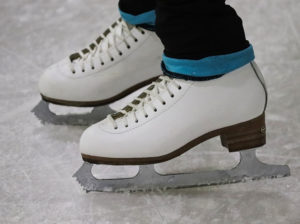 Friction is very important in everyday life. You need high friction for everyday shoes to stop slipping around, but low friction for ice skates and roller skates, so you can slide about. High friction between a car’s tyres and the ground makes it possible for the tyres to push the car along when the wheels turn. On icy or muddy ground, the friction is reduced, so the wheels spin around but the car doesn’t move.
Friction is very important in everyday life. You need high friction for everyday shoes to stop slipping around, but low friction for ice skates and roller skates, so you can slide about. High friction between a car’s tyres and the ground makes it possible for the tyres to push the car along when the wheels turn. On icy or muddy ground, the friction is reduced, so the wheels spin around but the car doesn’t move.
